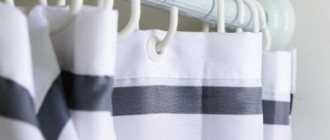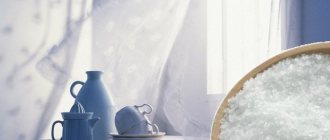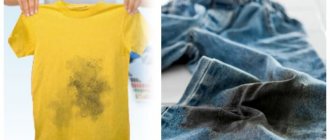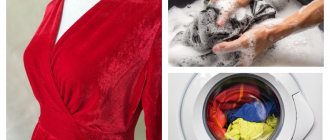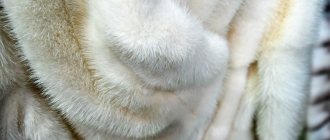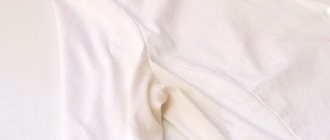A shower curtain is a necessary accessory that protects the room from excess moisture. In addition, a beautiful curtain, combined with tiles, interior items, and furniture, serves as an excellent addition to the design of the room. If not for one trouble - constant humidity, when drops of water contribute to the rapid formation of mold and yellow spots on it. How to easily and quickly remove mold from a bathroom curtain using improvised means without damaging it? Let's look at several effective ways and techniques for cleaning curtains.
Reasons for the appearance of different types of pollution
Let's look at what kind of stains a bathroom curtain is susceptible to and find out the reasons for their occurrence in order to prevent their occurrence in the future:
- Yellowness. It appears at the bottom of the curtain, from contact with soapy water or foam. To prevent yellowing from appearing, after taking a shower or bath, rinse the curtain with clean water and dry thoroughly.
- White stains. The content of calcium and magnesium salts makes the water increased hardness. This is what causes white marks to form after water droplets dry.
- Rust. Red stains are difficult to remove; they can be removed while they are fresh. Most often, rust stains appear on the bottom of the curtain, as it is constantly in contact with water.
- Mold. Favorable conditions for their appearance and reproduction are high humidity and a warm environment. Most often, fungus can be found in the folds of the shower curtain. Keeping your bathroom well ventilated and removing moisture from the surface of the curtain will help prevent mold from forming.
Possible contamination
It is necessary to wash curtains in a timely manner in order to reduce cleaning time during subsequent cleanings, to preserve the health of the user and the appearance of the product.
The curtain becomes susceptible to various contaminations due to its constant use and high humidity in the bathroom. This is a protective decorative element that allows you to protect the room from water from the shower and cosmetics that a person uses during procedures. Accordingly, all this falls into the curtain itself.
What cleaning and washing products to use
To remove various types of stains, specialized solutions are used:
- Domestos;
- Vanish;
- Sanita;
- Comet.
- as well as household products used in traditional washing methods, which include: baking soda, acetic and citric acids.
Which cleaning product to use depends on the material of the curtain. When choosing curtains for the bathroom, you need to remember that they differ not only in size and design, but also in the material used. Shower curtains can be textile or plastic.
Main types:
Polyethylene
This type of material is thin and short-lived. It is not customary to wash it. Typically, film curtains are replaced every six months with new ones, since they have a low price.
But in case of urgent need, plastic curtains should be carefully and carefully cleaned with a mild detergent. Washing powder or dishwashing detergent is suitable for this.
Polyester
The most popular and practical material that can be washed both by hand and in a washing machine at temperatures up to 40 degrees. When washing, you can add bleach, powder, vinegar, soda and citric acid.
Textile curtains
Fabric curtains are made of synthetic and natural material, which is impregnated with a moisture-repellent composition.
The fabric requires scrupulous attention. Usually have care information on the product label. They can be washed in a machine at 30 degrees on a delicate cycle.
If the fabric is cotton or linen, then it is permissible to boil it with the addition of boric acid. For hand and machine washing, use powder and fabric softener.
Polyvinyl chloride
Vinyl is attractive due to its low cost and ease of maintenance. They do not absorb moisture at all; just wipe the curtain with a dry cloth after taking a shower.
Baking soda, lemon juice, bleach and any type of cleaning powder are suitable for removing stains.
What to wash with?
Here's how to wash a bathroom curtain:
- Industrial chemicals:
- "Vanish";
- "Domestos";
- fluoride bleaches;
- any washing powder or washing gel;
- Ace.
Folk ingredients: soda; citric acid; hydrogen peroxide and ammonia; vinegar.
In addition to the ingredients that will rid the bathroom curtain of yellowness and stains, you will need tools. A toothbrush, sponges with varying degrees of hardness, a basin, rags and a towel will speed up the process. Cleaning should be done with rubber gloves and protective clothing to protect the skin of your hands. You can also wash the curtain in a washing machine, after soaking it for 2 hours in a soap solution. In this case, you should select the delicate mode and do not use the spin and dry function. With the right approach, curtains should be changed or washed at least once every 30 days.
There are three ways to wash a bathroom curtain
Partial wash
It is not necessary to wash the entire curtain, especially when the dirt is at the bottom of the curtain. Stains can be removed with a brush and some detergent.
If the stains cannot be removed, you can take a handful of baking soda, apply it to a sponge and rub thoroughly. Next, rinse the bottom part with clean water.
Handwash
It will not be difficult to remove various types of stains manually. In a basin with a warm solution in a ratio of 3 liters of water to 1 tsp. soda and 1/2 tsp. Soak the curtain with citric acid for 60 minutes.
After time, wash by hand and rinse thoroughly in clean water. If the curtain is heavily soiled, you should repeat the soaking procedure with a new solution, rub the dirt with a brush, and only then proceed to rinsing and drying.
For delicate hand washing, you can use baby laundry bleach and a few drops of tea tree essential oil. This method will gently remove stains, disinfect the product and leave a pleasant smell.
IMPORTANT! It is strictly forbidden to wash shower curtains in boiling water; under the influence of high temperatures, the curtains can become deformed.
Machine washable
When washing your bath curtain in the washing machine, follow these guidelines:
- The washing mode is selected depending on the symbols indicated on the label. If there is no tag, delicate wash is more suitable.
- It is better not to exceed the temperature at which the curtain can be washed by more than 30 degrees.
- If the product allows, then you need to add chlorine powder.
- Set the additional rinse, but do not use the spin and dry mode.
- For more efficient washing, terry towels are additionally loaded into the drum of the machine; they act as brushes.
- Before using the washing machine, if stains are difficult to remove, you should use a pre-wash. Depending on the nature of the traces, choose a recipe for removing contaminants.
IMPORTANT! You cannot wring out the bathroom curtains, otherwise creases and bruises will appear on it. Under no circumstances is it recommended to iron the product.
How often to clean a curtain
A bathroom curtain, especially if it is made of thin material (for example, polyethylene), does not require constant maintenance. On the contrary, you only need to clean it when necessary. Frequent washing can deform the fabric, and careless movement risks tearing the material. Therefore, it is more advisable to apply preventive measures and begin the cleansing process when there is visible contamination.
We hope that these tips and videos on how to wash a bathroom curtain without dry cleaning will help you save a lot of time and money.
How to remove yellowness from a bathroom curtain
The basic means at hand that will rid the curtain of yellowness are available in almost every home.
Use of whiteness
When machine washing, white is added to the bleach compartment in an amount of 100 ml and washed on a long cycle with pre-soaking.
If the product manufacturer prohibits the use of chemical bleaches containing chlorine, then there is an alternative - oxygen bleaches.
Such products include “Vanish”; they are also added to the bleach compartment during washing, following the instructions presented on the product’s packaging. If it is heavily soiled, you can leave the product overnight in a bowl of diluted product.
Traditional methods
The folk method of eliminating yellow plaque consists of several stages:
- Wipe the surface with a sponge soaked in hydrogen peroxide.
- After this, the curtain should be dipped in a mixture of 500 ml of warm water and 200 ml of vinegar.
- Finally, rinse in cool water.
An equally effective recipe is ammonia and table salt. Ammonia neutralizes magnesium salts, which give a yellow tint to things.
Take 250 ml of water, 1 tsp. ammonia and 1 tsp. l. salt is stirred until the salt is completely dissolved. Dip the dirty section of the curtain into the liquid and leave it for an hour. After which the item must be washed and rinsed by hand.
Another way is to add a couple of teaspoons of boric acid to warm water. Leave the curtain to soak for 5 hours, then wash using any acceptable method.
Cleaning faucets
Bronze bathroom faucets, thanks to their original design, often serve not only a direct functional purpose, but also play the role of a non-trivial decorative element in the interior decoration of oval bathtubs.Lime deposits and mold can significantly degrade the aesthetic appeal of bronze bathtub taps. Familiar products available at hand in every home can help cope with the problem: chicory, split peas, flour, salt.
Let's consider each of the methods:
- Chicory ideally cleanses bronze bath accessories from plaque and limescale deposits and neutralizes lilac pigment. To obtain a suspension, powdered chicory is combined with water in a one-to-one ratio. The suspension is applied to the accessory, thoroughly brushed, and then washed off with warm water. To give lasting shine and consolidate the result, wipe with a dry cotton cloth.
- Boiling in pea broth for a couple of hours will return the bronze product to its original appearance. After the procedure, the accessory is rinsed in running warm water and rubbed with a napkin until shiny.
- You can make a cleaning paste for bronze products based on flour, salt, and acetic acid. The ingredients are combined in equal proportions and mixed thoroughly until a homogeneous consistency is obtained. The paste is applied to the surface that requires cleaning, rubbed in with a sponge or gauze for half an hour. We complete the procedure with traditional rinsing and wiping dry.
Back to contents
Removing rust stains
Recipe No. 1
You can wipe off fresh rust stains with a mixture of ammonia and hydrogen peroxide in a ratio of 3 to 1.
The solution is applied with a brush, left for 2-3 minutes, then scrubbed off. If the rust is not removed, then a cotton pad soaked in the solution is applied to the stain and left to act for 15 minutes. The curtain is then washed by hand.
Recipe No. 2
A teaspoon of acetic acid per glass of water, then heat the liquid without bringing to a boil, remove from heat and add a couple of drops of ammonia and half a teaspoon of soda.
The item affected by rust is dipped into the resulting mixture. If the destruction of the red spot does not occur the first time, the procedure is repeated.
To remove rust, chemical compositions of the well-known “Sanita” are used.
Treat the stain with the substance and leave for a few minutes, remove with a damp cloth. When removing chemical stains, it is recommended to use gloves.
Are there any restrictions for washing curtains?
Improper washing of bathroom curtains can lead to damage and loss of presentable appearance.
The cleaning method directly depends on the material the curtain is made of.
The most common include:
- polyvinyl chloride;
- polyester;
- polyethylene.
PVC and polyester
Vinyl and polyester for the most part can survive washing and maintain their appearance and performance. Restrictions on cleaning may be given by the manufacturer of a particular product, so you should read the label on the product before washing.
The manufacturer may prohibit machine washing, as well as the use of bleaches. In this case, it is better not to experiment and treat the curtains with your hands with an approved detergent.
If there are no strict restrictions, then automatic washing in a washing machine will be the best option. The exception is the need to remove stains characteristic of the bathroom: from rust, mold or limescale. Household chemicals and homemade recipes are used for these purposes.
Polyethylene
Among all the types of materials that are traditionally used to organize curtains in the bathroom, polyethylene is the cheapest and most fragile.
It is capable of good protection against splashing, but has a very short service life - up to six months.
Such material will not survive thorough washing. Maximum cleaning is a careful treatment with a non-aggressive agent. For example, Pemolux.
Cleaning is carried out with a soft sponge, without using brushes, which can damage the thin material. In case of serious contamination, the plastic curtain is simply replaced with a new one.
How to wash a bathroom curtain from mold and mildew
The fungus is afraid of alkaline and acidic environments and soda, vinegar, and lemon juice are used to destroy it.
The following method will help remove mold from bathroom curtains:
- Place the curtain in a basin and rinse in warm water.
- Sprinkle baking soda on the fungus stains and rub the moldy areas with a brush or sponge.
- Rinse in plenty of warm water with a packet of citric acid added.
Let's say there is another way to wash the curtain from the fungus. Add 100 grams of baking soda and vinegar each to the machine drum, and additionally turn on the pre-wash mode.
A good way to clean curtains is to use bleach. Add a couple of caps of bleach to a bowl of water.
The product is left in this solution for an hour, then the stains are scrubbed off with a brush, followed by rinsing and drying.
Lemon acid
Lemon is known for its bleaching and antibacterial properties, so it can be used to clean yellowed curtains.
Instructions:
- Pour 2 liters of water into a deep container.
- Add a packet of citric acid and stir.
- Soak the curtain in the liquid for an hour, and then additionally clean visible stains with a soft brush.
- Rinse and hang to dry without wringing.
Instead of citric acid, fresh fruit juice is suitable. For washing, prepare a solution from the juice of five lemons and 1 liter of water, and then carry out the treatment according to the same principle.
Features of washing polyvinyl chloride curtains
Vinyl curtains are easy to maintain. The peculiarity of washing curtains made of polyvinyl chloride is that they do not require machine or hand washing.
You can wash vinyl curtains with a sponge dipped in soapy water. If white spots, rust or mold appear on the curtains, then to remove them you will need bleach, Comet cleaning powder or Sif gel.
Apply the product to the product using a sponge and leave for 5 minutes to act, then rinse thoroughly with warm water and wipe with a dry cloth. Folk remedies you can use are baking soda, citric acid, and ammonia.
Using Vinegar and Soda
If a lot of mold has formed on the curtain, you can use a solution of vinegar and soda. Here's how to wash using these products.
Preparation of the solution
First you need to prepare the solution itself. To do this, take a basin and fill it with warm water. Recommended temperature is about 60 degrees. Then approximately 100 g of soda is poured into the same container and approximately 100 ml of vinegar is poured.
Soak
You can place a dirty curtain in the prepared solution. Soaking should last approximately 60 minutes.
Wash
When an hour has passed, you can start washing. It is important to use a stiff sponge and brush.
Rinse
And the final stage of cleaning is rinsing. The curtain must be placed in clean water and all traces of mold and detergent must be removed.
How to dry a bath curtain
You cannot dry the curtain or spin it in the washing machine, as this will damage its appearance. It would be more correct to slightly squeeze the curtain with your hands and allow the remaining water to drain into the bathroom.
Next, you should hang the product, avoiding folds, in the fresh air until completely dry. If there is no possibility of drying on the balcony, then you can immediately hang the curtain on the curtain rod, then wipe it with a dry cloth and leave the door to the bathroom open to provide air access.
IMPORTANT! Drying curtains near heating appliances can lead to yellow stains.
Is it possible to put it in the washing machine?
Washing curtains in a washing machine is the easiest way to freshen the material.
If curtains are used regularly, such treatment should be carried out once every 60-90 days. Procedure:
- Remove the curtain.
- If it has removable fasteners or removable decor, they must be removed.
- Place the product in the drum.
- Select the “Delicate” mode.
- Make sure that the temperature is no more than 40°C.
- Disable the “Drying” and “Spin” modes.
- Start the machine.
- Remove the wet curtain from the drum and hang it in place, allowing the water to drain into the bathroom.
Adding two terry towels to the load with a curtain will help enhance the effect of washing. Their rough surface will help clean the curtain better.
This treatment is suitable for curtains that are not heavily soiled. Otherwise, it is advisable to start washing by pre-soaking and treating stains.
The detergent for this procedure should be selected following the recommendations of the curtain manufacturer. If they do not specify strict restrictions, then it is possible to use bleach or other products with chlorine.
With strict restrictions, oxygen-containing bleach without chlorine will help. For example, Vanish. Soaking should be carried out in accordance with the instructions for the specific detergent, and do not use hot water.
Preventing problems
Specialized products to prevent shower curtain stains are essential. For example, water-repellent agents will help prevent the appearance of limescale, and an antimicrobial spray will prevent the formation of fungal spores.
After taking a bath or shower, the curtain must be wiped dry, avoiding any remaining moisture in the folds.
Leave the room open to allow the damp environment to ventilate. For weekly care, you should use a spray bottle and a specially prepared solution.
To do this, take 200 ml of water, 50 ml of table vinegar and 5 drops of pine essential oil. Spray the mixture onto the curtains and wipe with a sponge.
Once a month, the curtain is washed completely by hand or in a washing machine. The main condition will be proper care of the curtain and then it will retain its appearance for a long time.
Regular care
If you regularly care for your bathroom curtain, washing it in a machine or by hand may not be necessary, and in this case the plastic curtain will last much longer.
You can wash a lightly soiled curtain as follows.
- Dilute in water any detergent that you usually use to clean the bathroom and kitchen.
- Pour into a spray bottle.
- Spray the product onto the curtain.
- Rub it with a sponge.
- Rinse off the product with wet cloths and let the curtain dry.
It is recommended to wash the curtain in the bathroom monthly for hygienic reasons, but it should be washed more often to prevent strong, difficult-to-remove stains.
Mildew and yellow stains that form on your shower curtain can be washed off. Modern household chemicals and folk remedies will help you do this. You can wash it in an automatic machine, an activator type machine, or by hand - it all depends on the degree of contamination and the manufacturer’s recommendations. Taking into account the information on the product label will help keep it safe and sound when washing.
What to consider?
When choosing how to care for your bathroom curtain, pay attention to the material from which the curtain is made. Among the most common options are several:
Among the most common options, there are several.
- Polyvinyl acetate, polyvinyl chloride. Products made from vinyl and polyester are easy to clean, they are strong and durable. To care for such materials, it is recommended to use bleaches and powders.
- Fabrics with impregnation that repels liquid. Such curtains are practical and comfortable. You can easily wash water off the curtain (thanks to the impregnation). There will be no marks on her after this. It is recommended to wash such materials weekly.
- Polyethylene curtains. They are short-lived and cheap. In the absence of the necessary care, they have to be changed monthly. Cleaning can be done using baking soda or special products. If such a curtain is carefully looked after, it can last about six months (it is recommended to clean the polyethylene rather than wash it).
- Glass products. To care for such surfaces, ordinary household chemicals for cleaning glass are quite suitable. Glassware can also be cleaned with a steam cleaner.
It is better to clean the curtain, focusing on the rules indicated on the label. Usually there is all the necessary information: is it possible to use household chemicals with chlorine, at what temperature to wash, is it possible to wash a bathroom curtain at all.
